Recommendations for Fully Vaccinated People
COVID-19 Homepage
How to Use Your N95 Respirator
- N95s must form a seal to the face to work properly. This is especially important for people at increased risk for severe disease. Wearing an N95 can make it harder to breathe. If you have heart or lung problems, talk to your doctor before using an N95.
- Some N95s may contain latex in the straps. If you have natural rubber latex allergies, see the manufacturers’ website for information about your specific model.
For specific manufacturer’s instructions for your N95 model, see Free N95 Respirator Manufacturers.
Your N95 may look different than the one in these pictures. As long as your N95 has two head straps (not ear loops), these basic instructions apply.
Wash Your Hands

It is best to put on your N95 with clean, dry hands.
Check Your N95
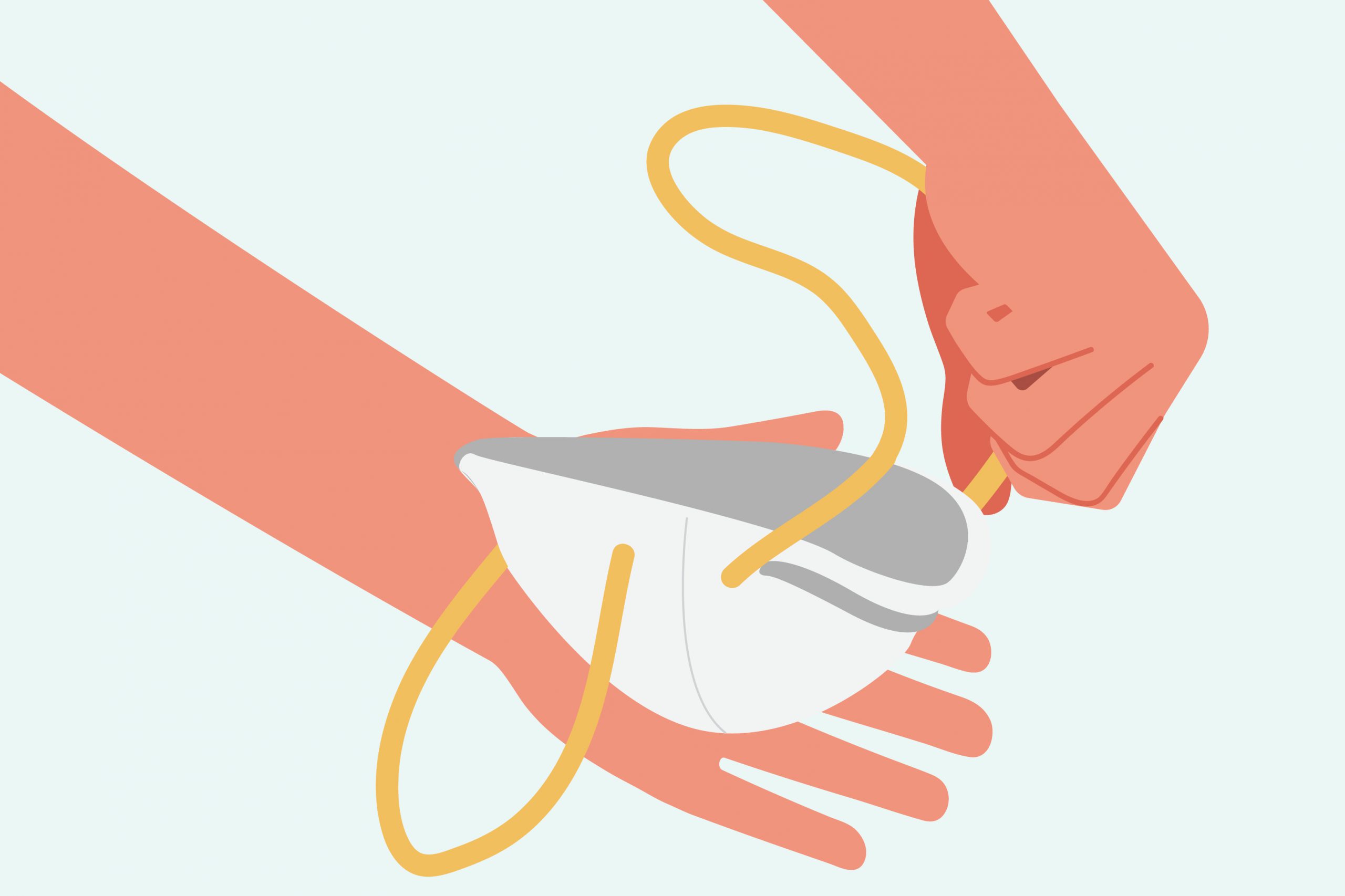
Always inspect the N95 for damage before use. If it appears damaged, dirty, or damp, do not use it.
Put on the N95

Hold the N95 in your hand with the nose piece bar (or foam) at your fingertips. If yours does not have a nose piece, use the text written on it to be sure the top end is at your fingertips.

Place the N95 under your chin with the nose piece bar at the top.

Pull the top strap over your head, placing it near the crown. Then, pull the bottom strap over and place it at the back of your neck, below your ears. Do not crisscross the straps. Make sure the straps lay flat and are not twisted.
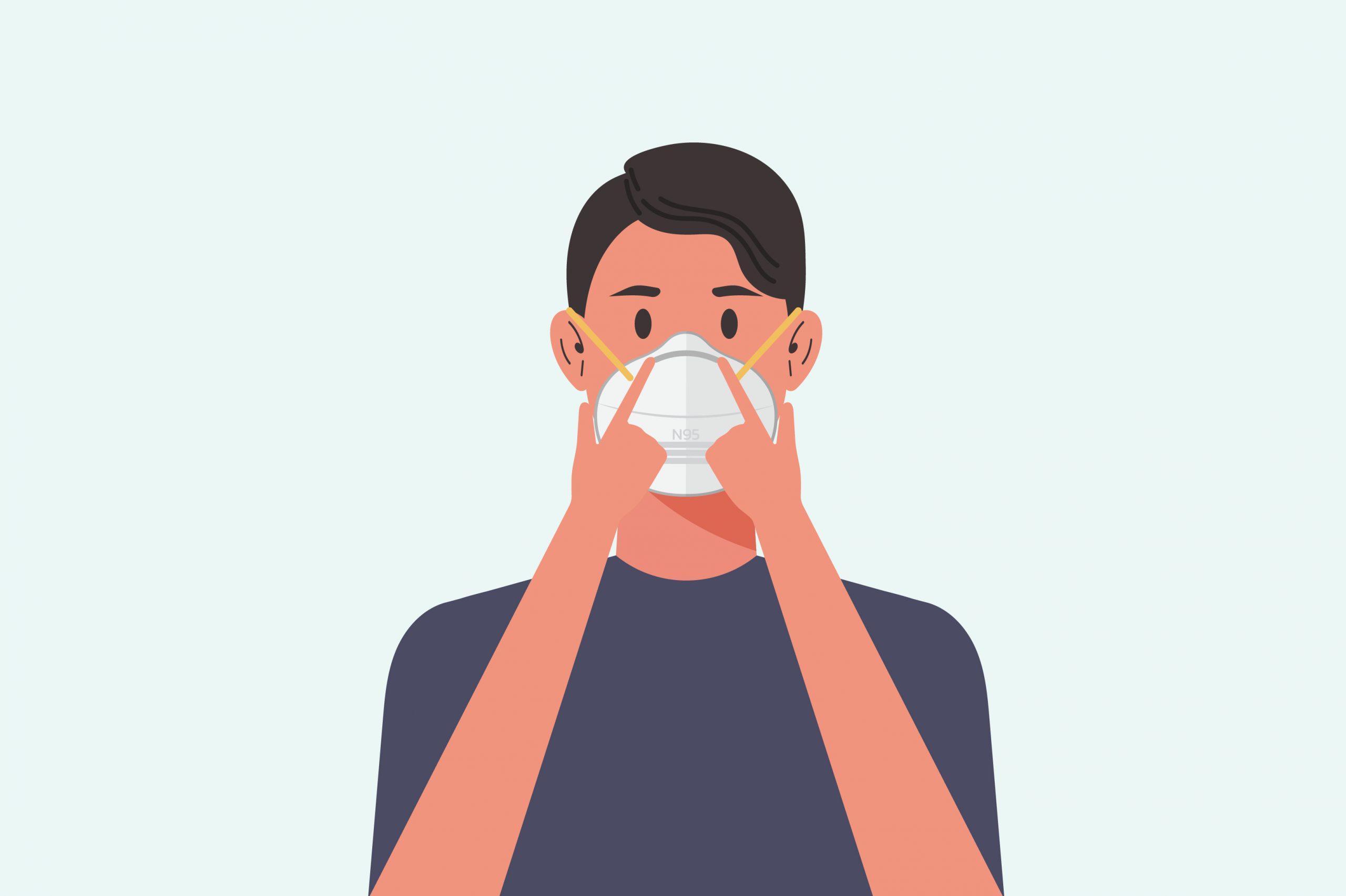
Place your fingertips from both hands at the top of the nose piece. Press down on both sides of the nose piece to mold it to the shape of your nose.
Keep Your N95 Snug
Your N95 must form a seal to your face to work properly. Your breath must pass through the N95 and not around its edges. Jewelry, glasses, and facial hair can cause gaps between your face and the edge of the mask. The N95 works better if you are clean shaven. Gaps can also occur if your N95 is too big, too small, or it was not put on correctly.
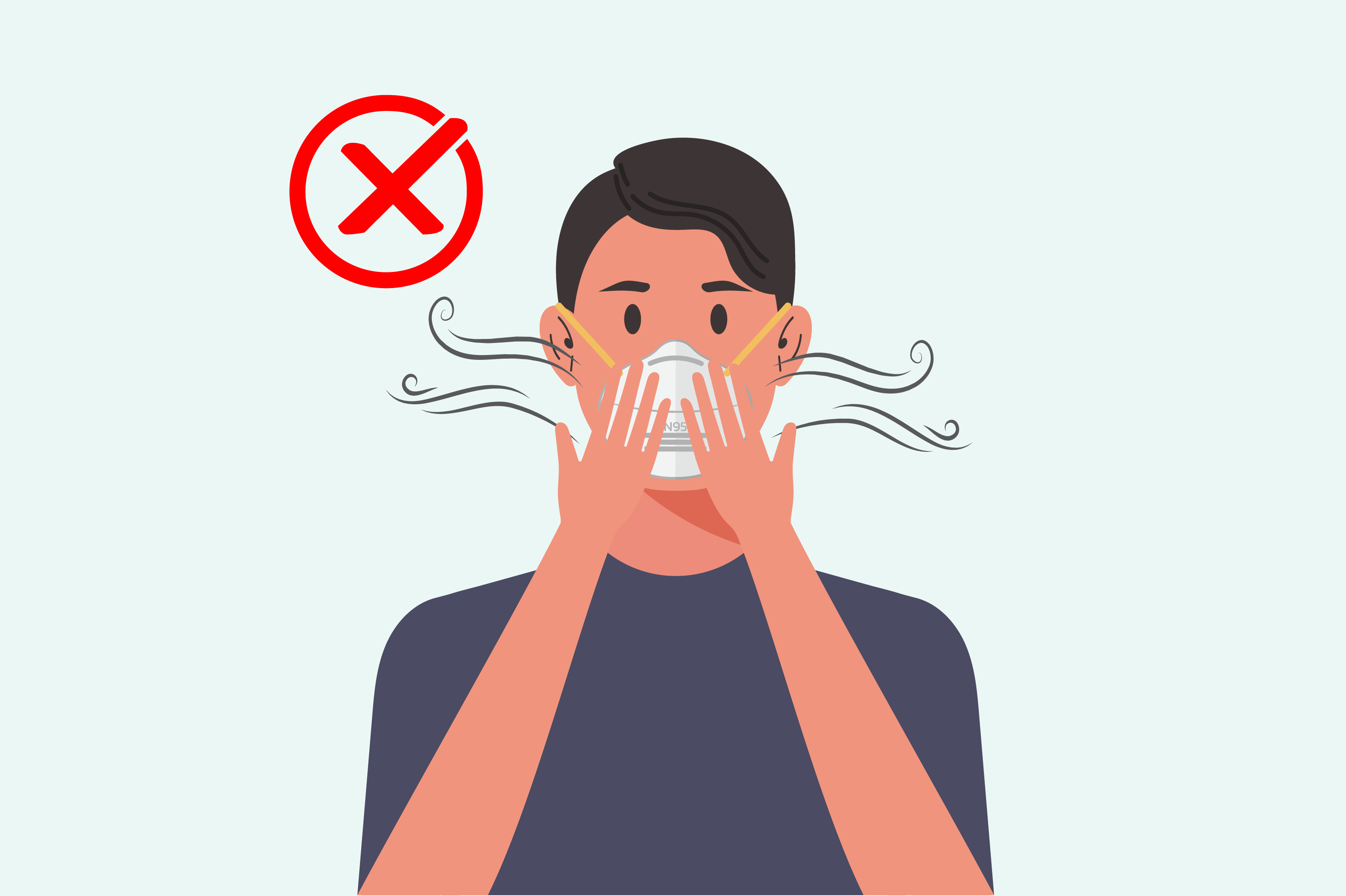
To check for gaps, gently place your hands on the N95, covering as much of it as possible, then breathe out. If you feel air leaking out from the edges of the N95, or if you are wearing glasses and they fog up, it is not snug. Adjust the N95 and try again.
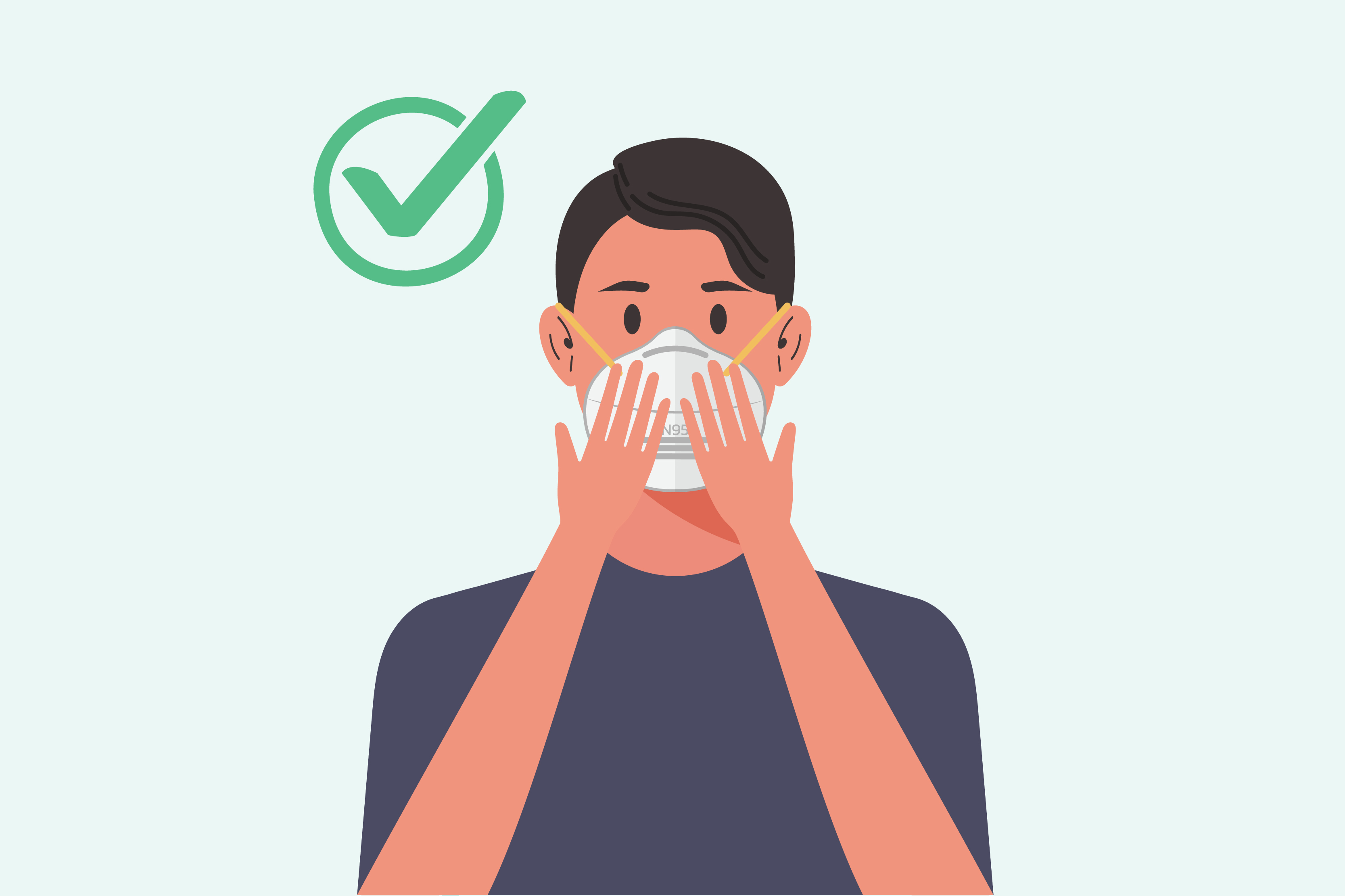
If you cannot get a tight seal, try a different size or style. Even if you cannot get the N95 sealed against your face, it will provide protection that is likely better than a cloth mask. Check for gaps every time you put on your N95.
Remove the N95
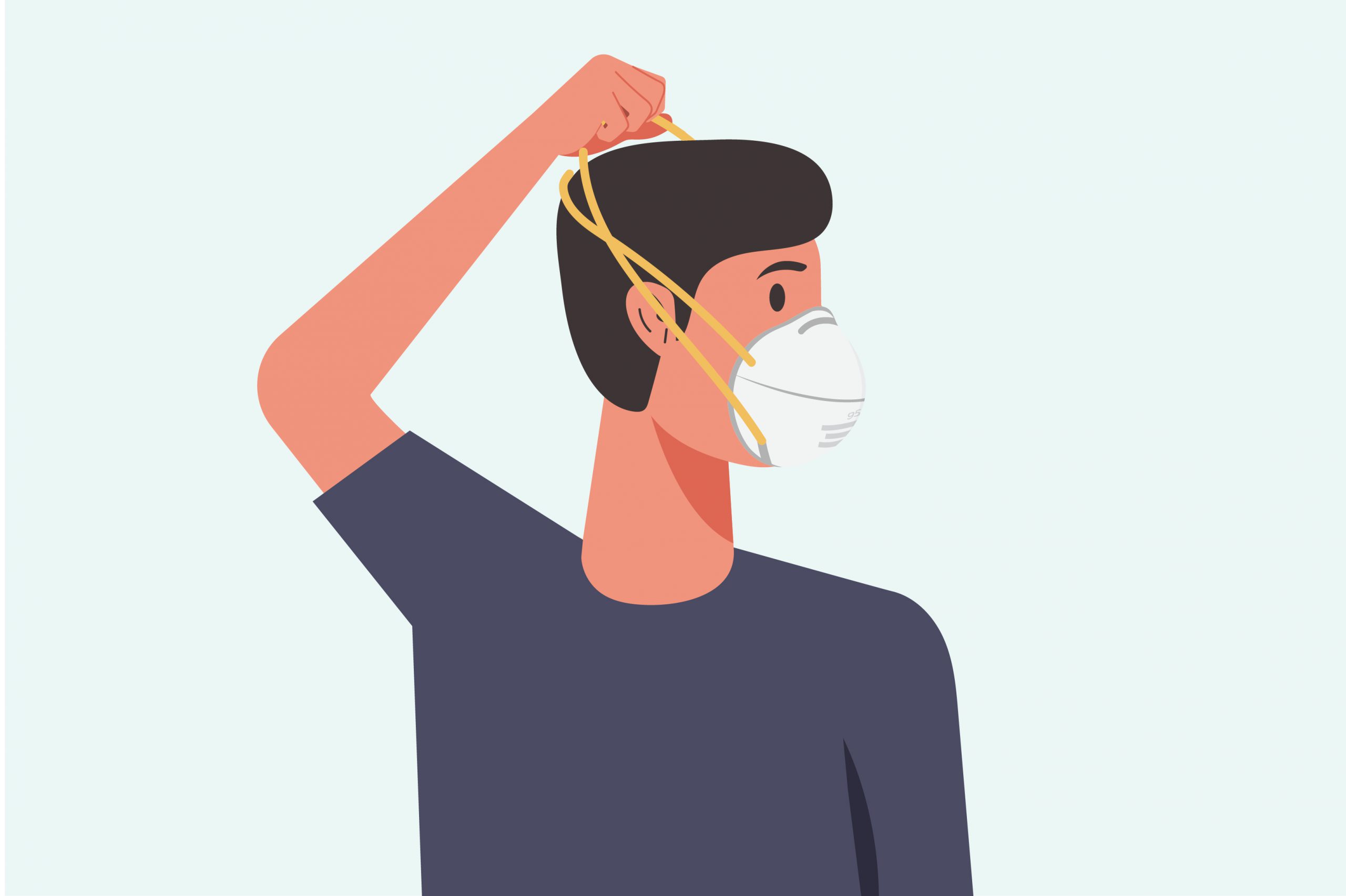

After you remove your N95, wash your hands with soap and water, or hand sanitizer containing at least 60% alcohol if soap is not available.
Do not wash your N95 or put it in the oven or microwave to try to sterilize it. Replace the N95 when the straps are stretched out and it no longer fits snugly against your face or when it becomes wet, dirty, or damaged. Throw it in the trash.